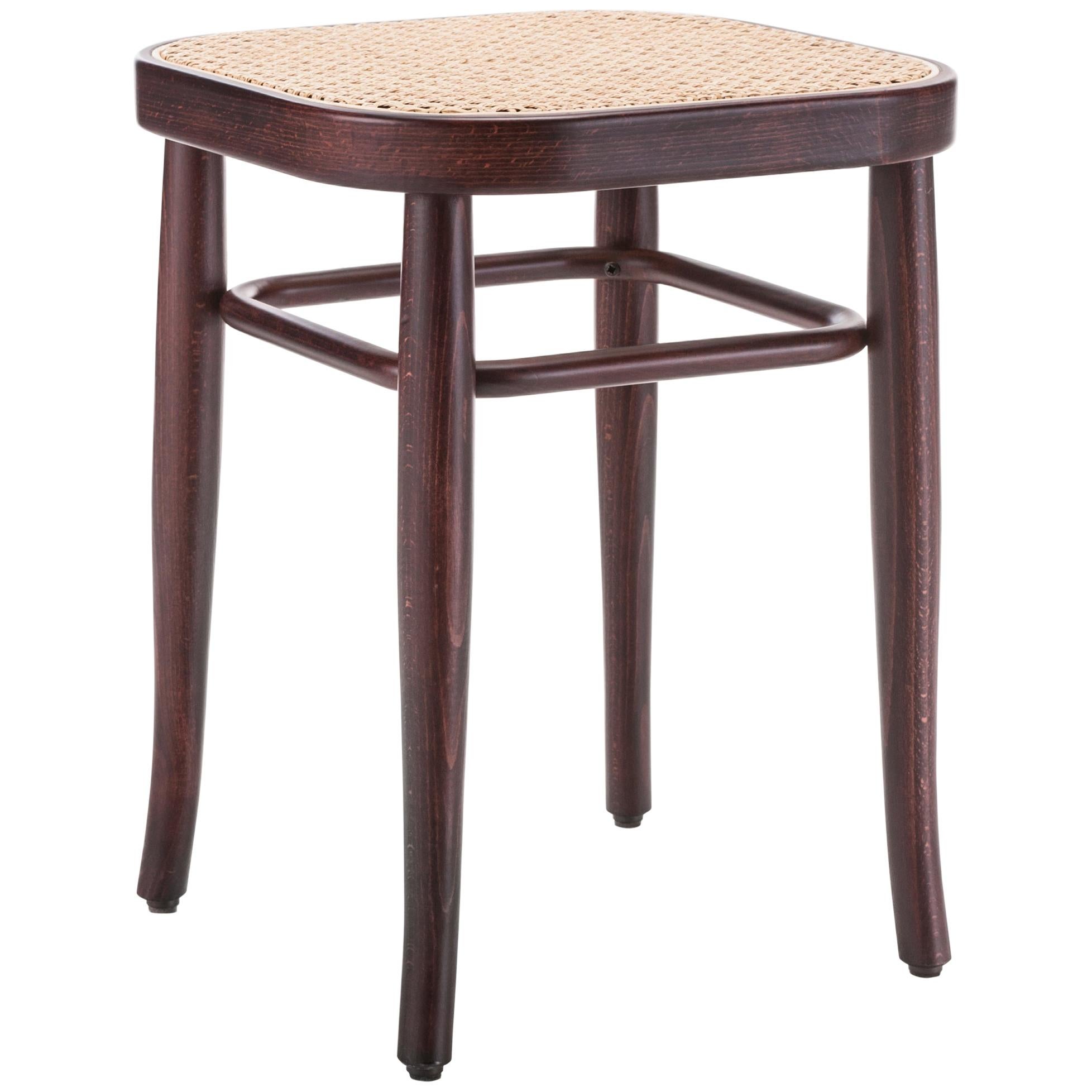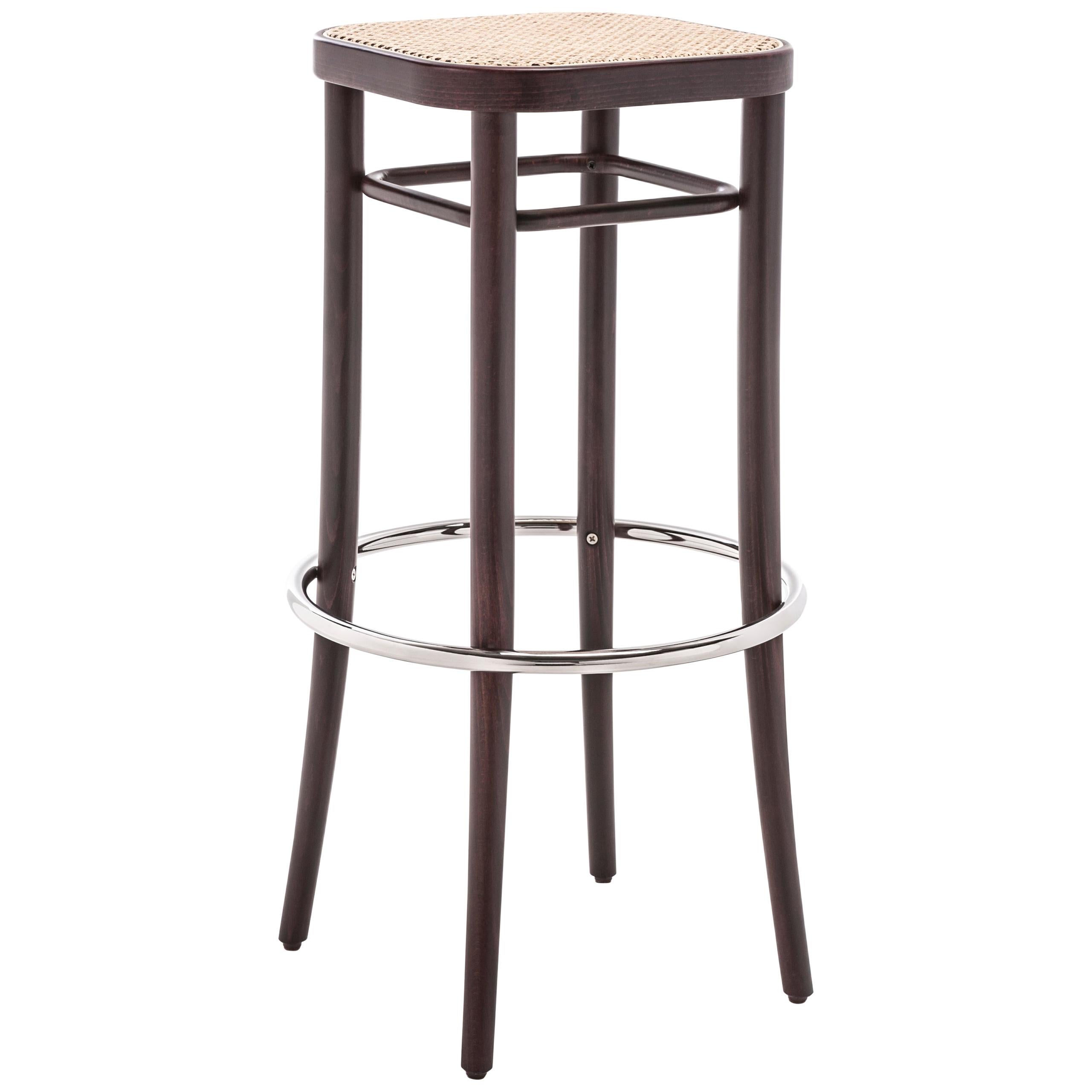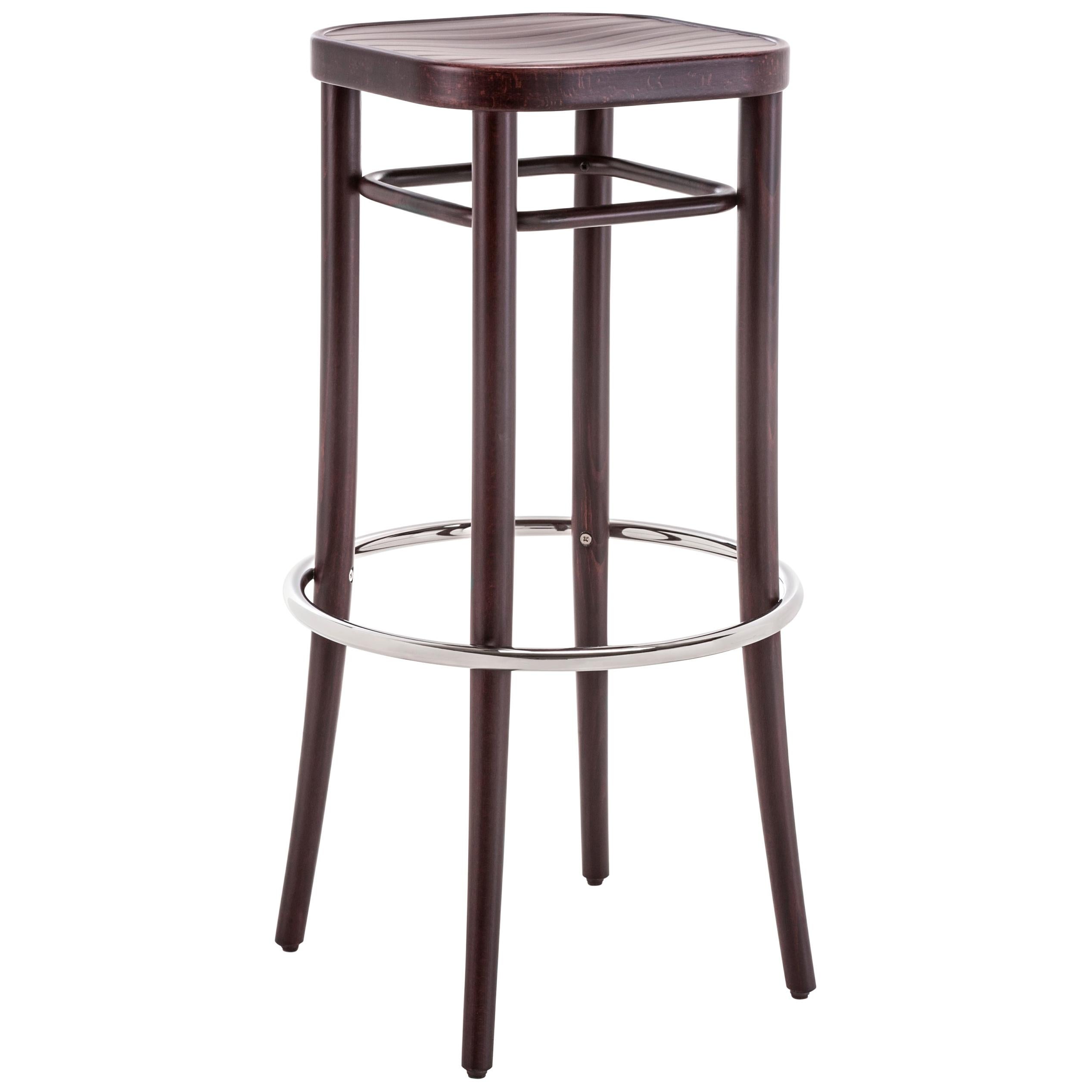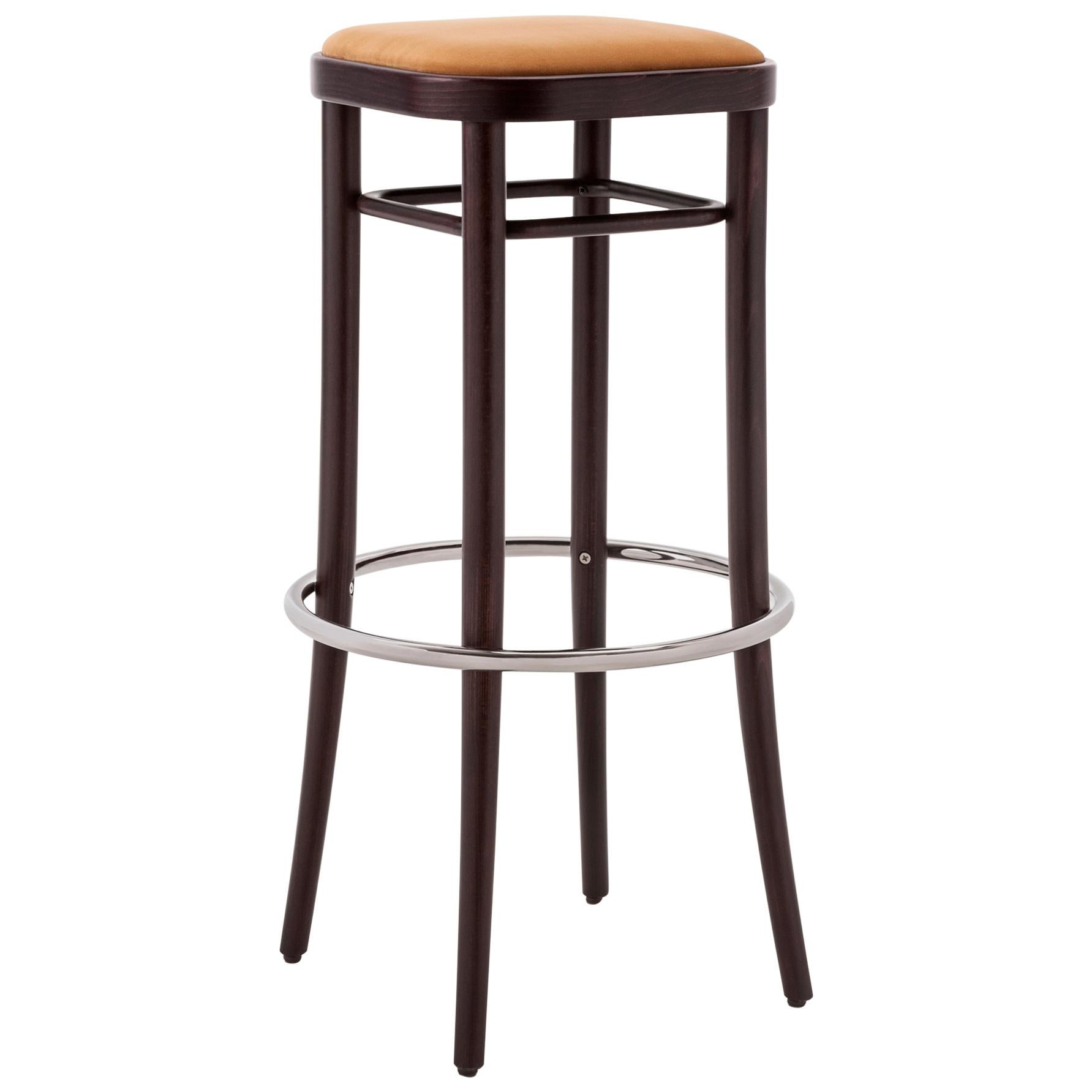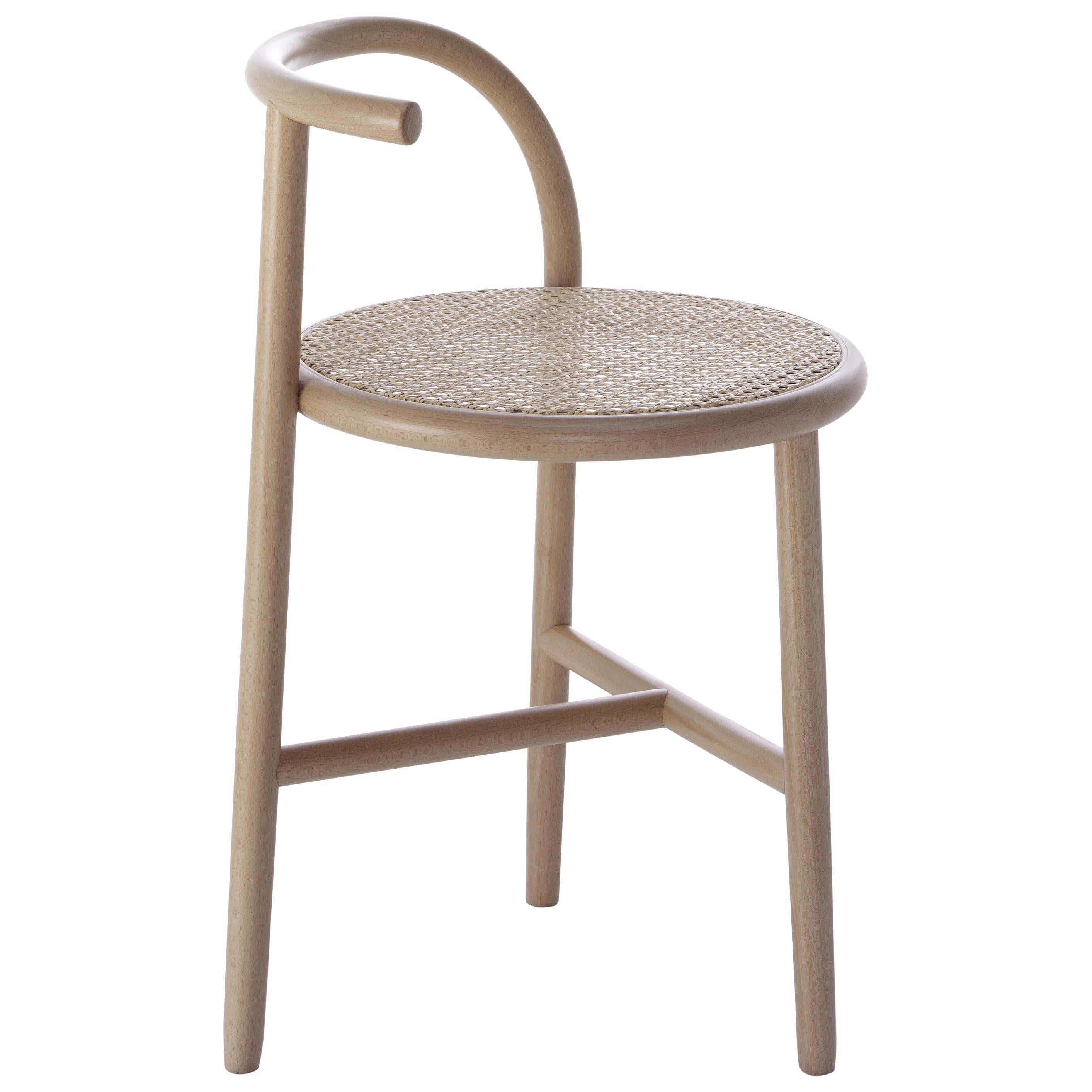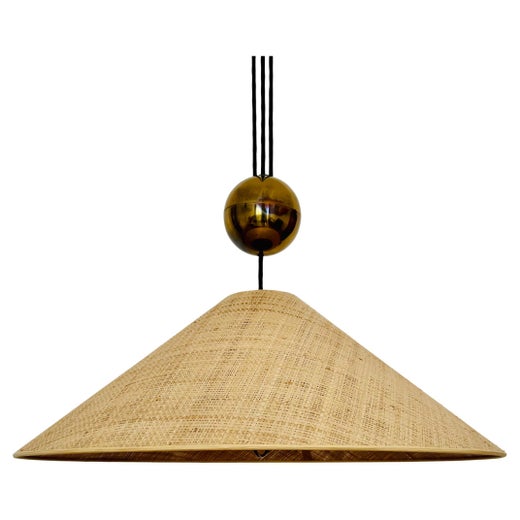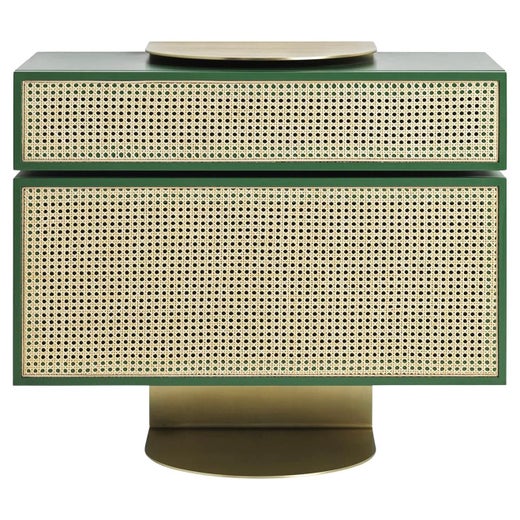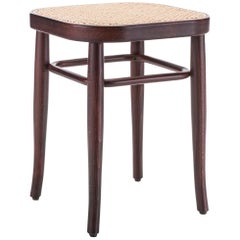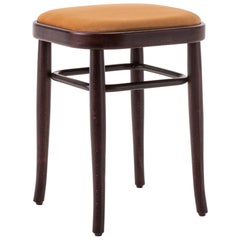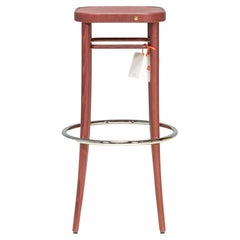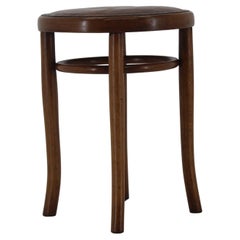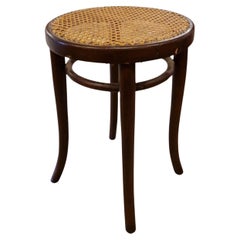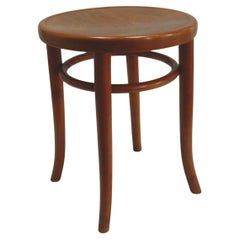Gebrüder Thonet Vienna GmbH Wiener Vienna 144 Hocker Low Stool in Walnut
About the Item
- Creator:Gebrüder Thonet Vienna GmbH (Manufacturer),Adolf Loos (Designer)
- Dimensions:Height: 17.7 in (44.96 cm)Width: 13.7 in (34.8 cm)Depth: 13.7 in (34.8 cm)
- Style:Modern (In the Style Of)
- Materials and Techniques:
- Place of Origin:
- Period:
- Date of Manufacture:Contemporary
- Production Type:New & Custom(Current Production)
- Estimated Production Time:8-9 weeks
- Condition:
- Seller Location:Brooklyn, NY
- Reference Number:Seller: SBV144LGN1stDibs: LU1639220327912
Adolf Loos
Essentially dubbed the Frank Llyoyd Wright of Europe by Wright himself, Adolf Loos possessed a talent for architecture and interior design as potent as his outspoken criticism of Art Nouveau and excessive ornamentation. A forerunner of the International Style, Loos exercised immense restraint in his building projects as well as his designs for chairs, tables, storage pieces and other furniture, and wrote prolifically on his disdain for taking a decorative approach to architecture.
The son of a stonemason and sculptor, Loos was born in 1870 in what is now Brno in the Czech Republic. He studied architecture in Dresden in 1889, completed a year of military service and moved to the United States by 1893. He visited the World’s Columbian Exposition in Chicago and came to appreciate the American approach to design over his three-year stay before returning to Vienna.
An avid proponent of simplicity, Loos hated fluff above all else. In his best known essay, “Ornament and Crime,” he states “the evolution of culture is synonymous with the removal of ornamentation from objects of everyday use” — a principle evident in both his architectural work and furniture. His writing was profoundly influential for practitioners of the International Style that would emerge later as well as the likes of prolific Swiss-born French architect and modernist prophet Le Corbusier.
Loos challenged the prevailing architecture and decorating styles of his time, and disliked the ornate work associated with the Vienna Secession and Gesamtkunstwerk — the concept of a house as total work of art — an ideal pursued by a collective born from the Secession called the Wiener Werkstätte. To Loos, design should prioritize function, and any ornamentation devoid of a structural purpose was childish and unnecessary.
Loos’s furniture — alongside the work of fellow Austrian architect Josef Hoffman — was the subject of an exhibition at the Museum of Applied Arts in 2014. His architecture projects, including the Viennese Goldman and Salatsch building, the Austrian Steiner House and the Villa Müller in Prague, are celebrated by design enthusiasts all over the world.
Find vintage Adolf Loos seating, lighting and other furniture on 1stDibs.
Gebrüder Thonet Vienna GmbH
For more than 180 years, Thonet — or Gebrüder Thonet — has produced elegant and durable tables and cabinets as well as chairs, stools and other seating that wholly blur the lines between art and design. Widely known as a trailblazer in the use of bentwood in furniture, the European manufacturer has reimagined the places in which we gather.
Noted for his skill in parquetry, German-Austrian company founder Michael Thonet received an invitation from Austrian Chancellor Prince Metternich to contribute Neo-Rococo interiors to the Liechtenstein City Palace in Vienna. The Boppard-born Thonet had honed his carpentry skills in his father’s workshop, where he carried out experiments with plywood and modified the Biedermeier chairs that populated the studio.
Thonet’s work for the chancellor raised his profile, and the cabinetmaker gained international recognition, including at London’s Great Exhibition of 1851, which featured works created by members of the Arts and Crafts movement as well as industrial products of the day. Thonet showed a range of furniture at the fair and won the bronze medal for his bentwood chairs. He incorporated his family’s company, the Thonet Brothers, with his sons in 1853.
Bentwood furniture dates as far back as the Middle Ages, but it is the 19th-century cabinetmaker Thonet who is most often associated with this now-classic technique. Thonet in 1856 patented a method for bending solid wood through the use of steam, and from there, the bentwood look skyrocketed to furniture fame. The works of renowned mid-century modern designers such as Alvar Aalto, Arne Jacobsen, and Charles and Ray Eames that put this technological advancement to use would not be as extensive or celebrated were it not for the efforts of the pioneering Thonet.
Considered the world’s oldest mass-produced chair, Michael Thonet’s ubiquitous Chair No. 14 demonstrated that his patented bentwood technology made it possible to efficiently produce furniture on an industrial scale. Now known as the 214, it won the German Sustainability Award Design for 2021, a recognition of the company’s commitment to environmentally responsible production.
Often called the Coffee House chair — the company’s first substantial order was for a Viennese coffeehouse — the No. 14 remains an icon. Thonet originally designed the chair in 1859, and it is considered the starting point for modern furniture.
The bentwood process opened doors — there were investments in machinery and new industrial processes, and the business began mass-producing furniture. By the end of the 1850s, there were additional Thonet workshops in Eastern Europe and hundreds of employees. Michael Thonet’s reputation attracted the attention of notable architects including Otto Wagner, Marcel Breuer and Ludwig Mies van der Rohe.
The No. 14 was followed by the No. 18, or the Bistro chair, in 1867, and the 209, or the Architect’s chair, of which Le Corbusier was a fan. (The influential Swiss-French architect and designer used Thonet furniture in his Pavillon de l’Esprit Nouveau at the 1925 International Exposition of Decorative Arts in Paris.)
Thonet’s chair designs also appeared in artwork by Toulouse-Lautrec, John Sloan and Henri Matisse in his Interior with a Violin Case. The noteworthy Thonet rocking chair remains a marvel of construction — in the middle of the 19th century, Michael produced a series of rockers in which the different curved parts were integrated into fluid, sinuous wholes. Thanks to Thonet, the humble rocker acquired something unexpected: style. It was captured in the paintings of Pablo Picasso, Pierre-Auguste Renoir and James Tissot.
Thonet is currently split into global divisions. Thonet Industries U.S.A. was acquired in 1987 by Shelby Williams and joined the CF Group in 1999, while the Thonet brand in Germany is owned by Thonet GmbH.
Find antique Gebrüder Thonet furniture on 1stDibs.
- ShippingRetrieving quote...Shipping from: Linden, NJ
- Return Policy
More From This Seller
View All21st Century and Contemporary Austrian Modern Stools
Wood
21st Century and Contemporary Austrian Modern Stools
Wood
21st Century and Contemporary Austrian Modern Stools
Wood
21st Century and Contemporary Austrian Modern Stools
Wood
21st Century and Contemporary Austrian Modern Stools
Wood
21st Century and Contemporary Austrian Modern Stools
Wood
You May Also Like
2010s Austrian Stools
Walnut
Vintage 1920s German Bauhaus Stools
Wood
Mid-20th Century European Vienna Secession Stools
Cane, Bentwood
Mid-20th Century Austrian Art Nouveau Stools
Wood
Vintage 1930s Austrian Jugendstil Stools
Beech
2010s Italian Stools
Walnut
